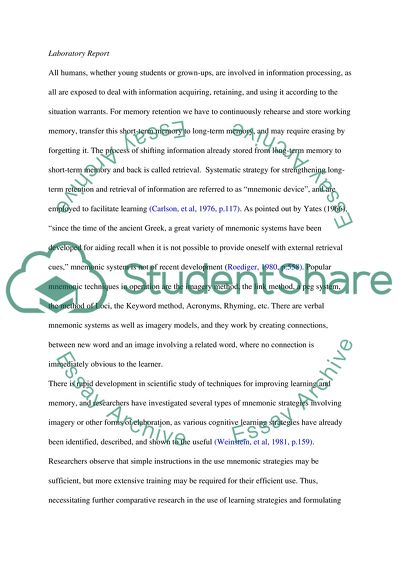Cite this document
(Effectiveness of Mnemonic Strategies on Recall: Method of Loci over Coursework, n.d.)
Effectiveness of Mnemonic Strategies on Recall: Method of Loci over Coursework. Retrieved from https://studentshare.org/psychology/1711184-psychology-topic-effectiveness-of-different-mnemonic-strategies-on-recall
Effectiveness of Mnemonic Strategies on Recall: Method of Loci over Coursework. Retrieved from https://studentshare.org/psychology/1711184-psychology-topic-effectiveness-of-different-mnemonic-strategies-on-recall
(Effectiveness of Mnemonic Strategies on Recall: Method of Loci over Coursework)
Effectiveness of Mnemonic Strategies on Recall: Method of Loci over Coursework. https://studentshare.org/psychology/1711184-psychology-topic-effectiveness-of-different-mnemonic-strategies-on-recall.
Effectiveness of Mnemonic Strategies on Recall: Method of Loci over Coursework. https://studentshare.org/psychology/1711184-psychology-topic-effectiveness-of-different-mnemonic-strategies-on-recall.
“Effectiveness of Mnemonic Strategies on Recall: Method of Loci over Coursework”, n.d. https://studentshare.org/psychology/1711184-psychology-topic-effectiveness-of-different-mnemonic-strategies-on-recall.


